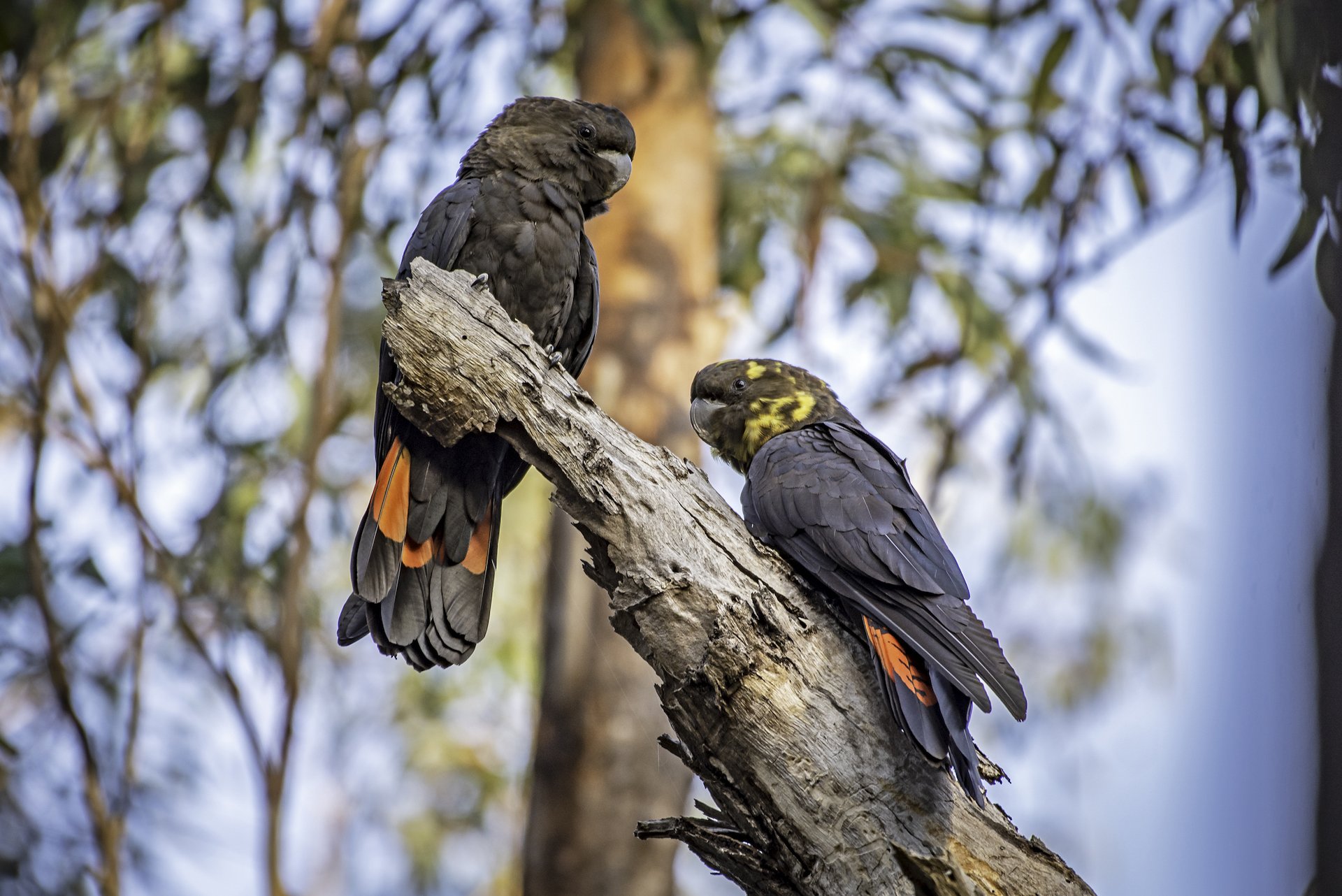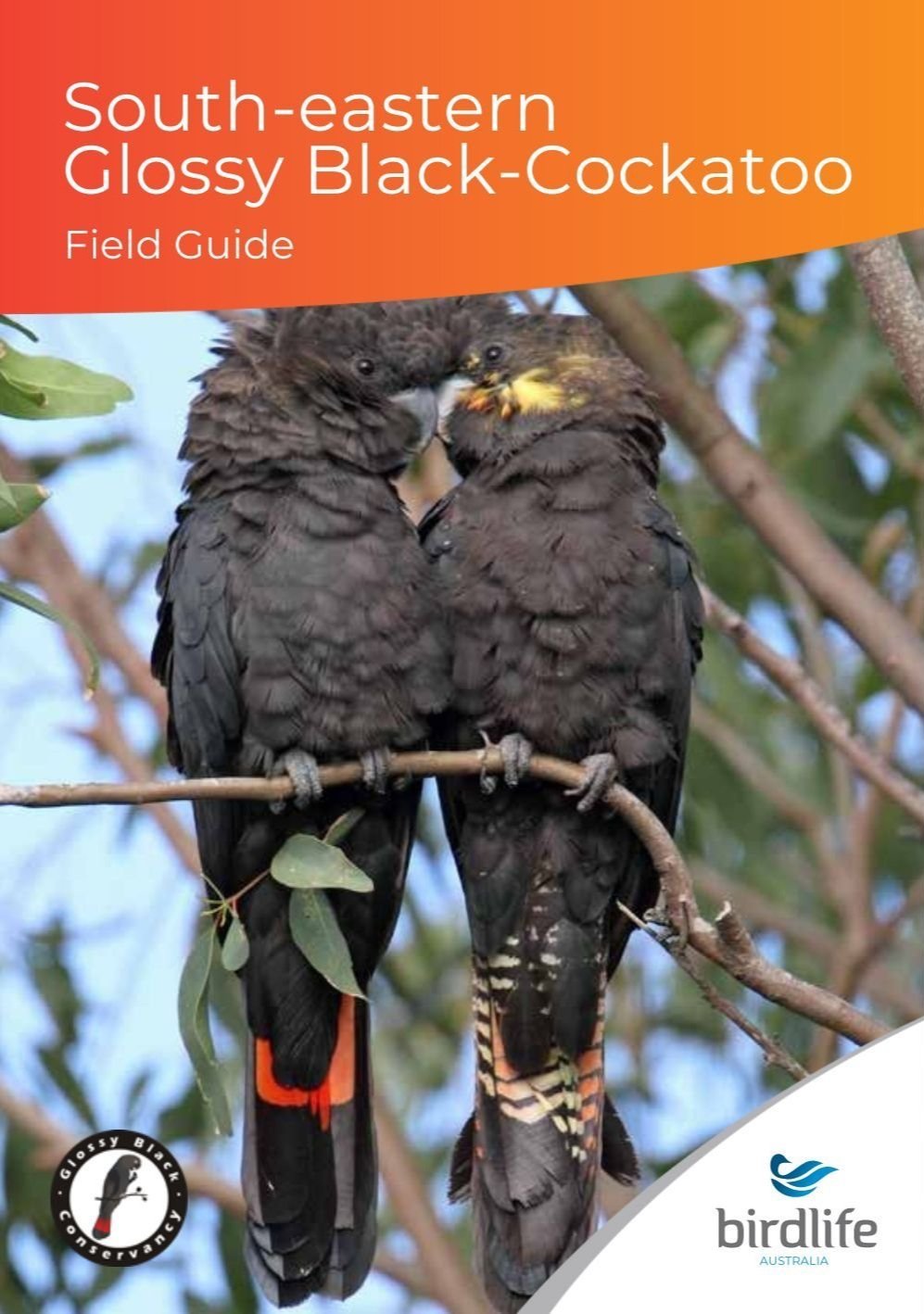
The far east glossy black project
Sanctuaries on private land for the vulnerable glossy black-cockatoo
This project is providing private landowners within the glossy black-cockatoos known range in Victoria (the NSW border to Colquhuon Forest near Lake Tyers) with an opportunity to set aside areas as either breeding sites (hollow bearing trees) or for feeding (such as shelterbelts, windbreaks). “Stands” of black sheoak can be planted – preferably adjoining forested areas within its known distribution.
The project encourages people to report sightings of the species (including changes over time and notable absences) on:
Training events will allow landholders and other community members to:
discover how to identify and report sightings of glossy black-cockatoos
learn more about their breeding behaviour
receive tips to search, field assess and report on favoured feeding and hollow-bearing trees.
Far East Victoria Landcare has planted 4,000 black she-oaks (Allocasuarina littoralis) on both public and private land across East Gippsland to aid in the recovery of this species.
About the glossy black-cockatoo
Glossy black-cockatoos (Calyptorhynchus lathami) lost almost 70% of their remaining habitat in the 2019/20 bushfires and are critically endangered in Victoria. In 2022, this species was nationally listed as vulnerable.
The glossy black-cockatoo is the smallest of the five black-cockatoo species. They have red to orange tail feathers. Females also have irregular yellow blotches on their heads.
They have large beaks for breaking open she-oak cones. The small seeds in the cones are a glossy black-cockatoo’s primary food source.
About the project
Resources
South-eastern Glossy Black-Cockatoo Field Guide
Glossy Black Cockatoo Information Sheet
Acknowledgements
This project is supported by the East Gippsland Catchment Management Authority with funding from the Victorian Government’s Biodiversity Bushfire Recovery Grants and Victorian Landcare Grants.
Cover photo by Mark Gillow. Description photo by Peter Murrell.





